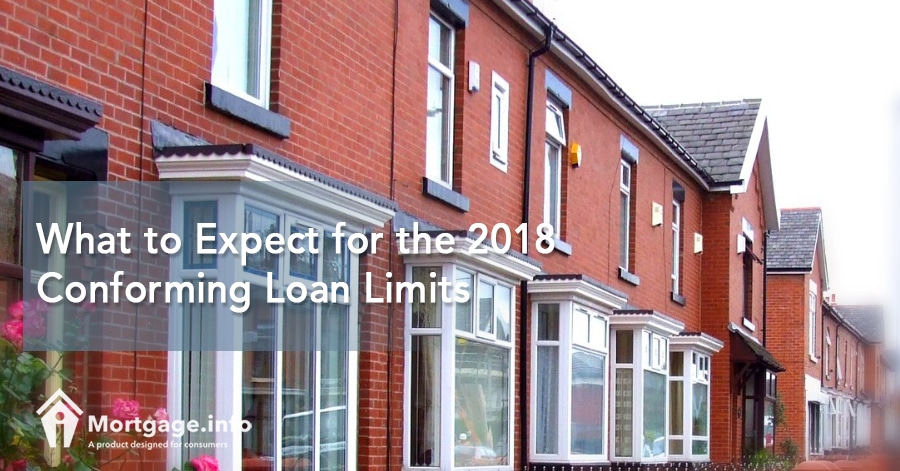Each year the Federal Housing Finance Agency evaluates the current conforming loan limits to determine if it needs to change. Sometimes the limits change and sometimes they remain the same. 2018 looks like it will be a year of change, though as the new limit will increase to $453,100. This is an increase of $29,000 over this year for which the maximum is $424,100.
Compare Offers from Several Mortgage Lenders.
Why the Conforming Loan Limits Change
Each year, the Housing and Economic Recovery Act requires mortgage entities (Fannie Mae and Freddie Mac) to review the current conforming loan limits. The new limits for the year should take into account the average home price throughout the country. This year, the House Price Index report showed an overall increase of 6.8 percent for housing prices. The conforming limit must then change this same amount in order to account for the current housing prices.
The Exception to the Rule
The conforming loan limits will not be the same in all areas, though. There are certain areas of the United States that are considered ‘high cost.’ These are areas that 115 percent or more of the homes exceed the conforming loan limits. The highest maximum loan amount in these areas is 150 percent of the current conforming maximum. Next year, this means the highest loan amount in any high-cost area will be $679,650.
The Conforming Loan Limits History
You might think that conforming loan limits would change each year as homes are supposed to appreciate each year. However, this isn’t always the case. While the conforming limits did increase last year, that was the first year since 2006 that they changed.
Click to See the Latest Mortgage Rates.
Prior to last year, the conforming loan limit was $417,000. The mortgage industry saw a $7,100 increase. This is just under a 2% increase, so the 6.8% increase is a high one next year.
What do Conforming Limits Do?
You might wonder how the conforming loan limits affect you. If you want a conventional loan, this is the most you will be eligible to receive. Notice, we said ‘eligible,’ not qualified. You must qualify for the loan amount based on your credentials. The maximum loan limits are in place so that no borrower goes over that amount even if they qualify.
The limits are also in place for certain government programs as well. The FHA and VA abide by these rules. However, there are not many loans that reach the conforming limits with government programs. FHA and VA loans are both for ‘modest’ homes in the area. This means the loans generally don’t get as high as conforming loans do.
What if You Need More?
If you don’t live in a high-cost area, yet you need to borrow more than $453,100, you’ll need a jumbo loan. This is a non-conforming loan. You can go above the limit and still get a decent rate. You may secure the loan from the same conventional lenders, but you’ll have stricter guidelines. Going above the limit puts a lender at risk.
Generally, you’ll need:
- A credit score higher than 700
- Between 3 and 12 months of reserves in a liquid account (this is money that can cover 3 to 12 months of your mortgage payment)
- Solid proof of your income and assets
- Proof of owner occupancy
Of course, the requirements vary by lender. You’ll want to shop around if you need a Jumbo loan to make sure you get the most affordable loan for your situation.
The conforming loan limits increasing is a good sign for everyone that owns real estate. It means homes are appreciating. If you haven’t seen a comeback from the housing crisis, there’s light at the end of the tunnel. Hopefully, the trend continues and everyone can owe less than their home’s value once again.

